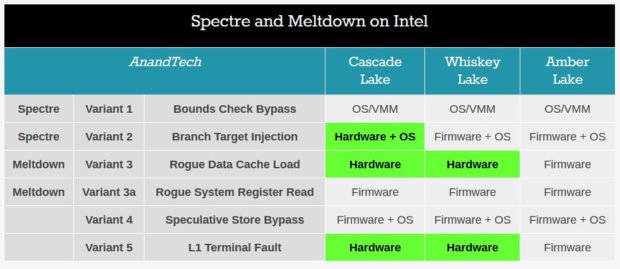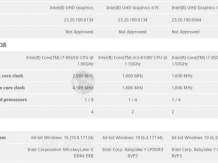Intel confirmed what exactly it introduced in Whiskey Lake architecture to surpass the previous one. It turns out that the main and key change was the hardware modification that made the processors immune to the 3rd and 5th variant of the Meltdown vulnerability.
The microarchitecture of Intel Whiskey Lake processors has recently debuted with SoC Whiskey Lake-U chips, designed for ultrabooks and 2-in-1 laptops. As it is the fourth refinement of Intel’s 2015 “Skylake” architecture, many wondered if it has more to offer than its predecessor, Coffee Lake. As a rule, at such moments we pay attention to the technological process … but no. The same 14 nm ++ is involved. So what has Intel changed in the new architecture? Well, you could say he decided to fix his mistakes.
In a statement to AnandTech, Intel explained that the key difference between Whiskey Lake and Coffee Lake is the changes at the silicon level. These are to protect the systems from the Meltdown exploit variant 3 and 5. Over traditional microcode updates, such a change has one key advantage – it does not affect processor performance. In addition, we learned that processors based on Cascade Lake will be even better in this regard. In terms of hardware, they will defend themselves against Specter 2, which is important as microcode updates reduce performance by 3-10 percent, while those at the hardware level affect it “to a much lesser extent.”
Source: TechPowerUp
Photos: TechPowerUp















